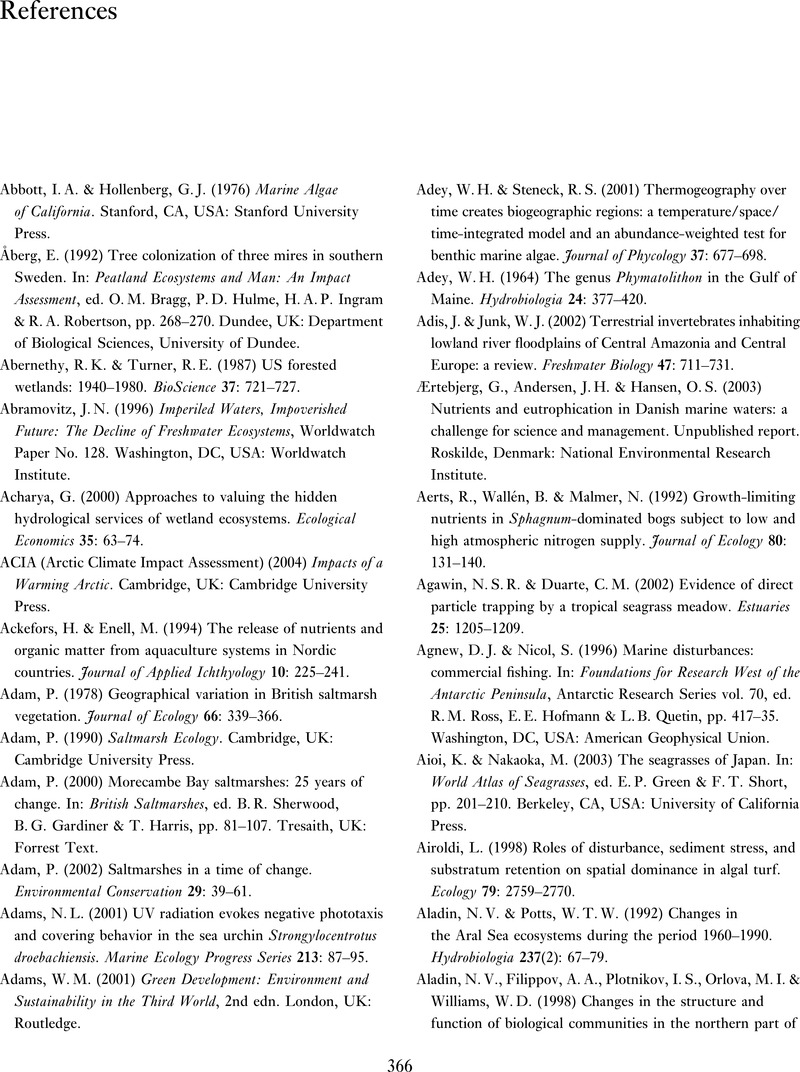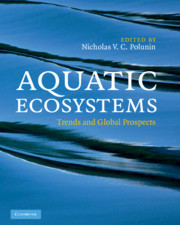Book contents
- Frontmatter
- Contents
- List of contributors
- Preface
- Acknowledgements
- 1 INTRODUCTION: Climate, people, fisheries and aquatic ecosystems
- PART I FLOWING WATERS
- PART II STILL WATERS
- PART III FRESHWATER WETLANDS
- PART IV COASTAL WETLANDS
- PART V ROCKY SHORES
- PART VI SOFT SHORES
- PART VII VAST MARINE SYSTEMS
- PART VIII SYNTHESIS
- References
- Index
- References
References
Published online by Cambridge University Press: 04 August 2010
- Frontmatter
- Contents
- List of contributors
- Preface
- Acknowledgements
- 1 INTRODUCTION: Climate, people, fisheries and aquatic ecosystems
- PART I FLOWING WATERS
- PART II STILL WATERS
- PART III FRESHWATER WETLANDS
- PART IV COASTAL WETLANDS
- PART V ROCKY SHORES
- PART VI SOFT SHORES
- PART VII VAST MARINE SYSTEMS
- PART VIII SYNTHESIS
- References
- Index
- References
Summary

- Type
- Chapter
- Information
- Aquatic EcosystemsTrends and Global Prospects, pp. 366 - 472Publisher: Cambridge University PressPrint publication year: 2008

